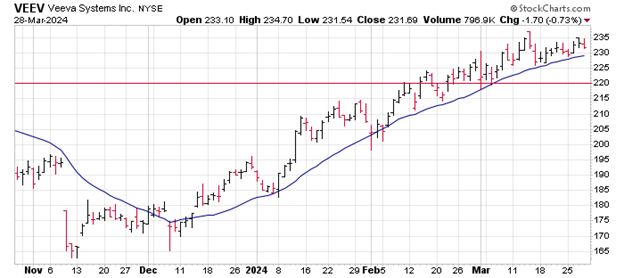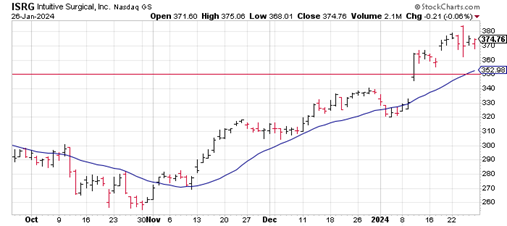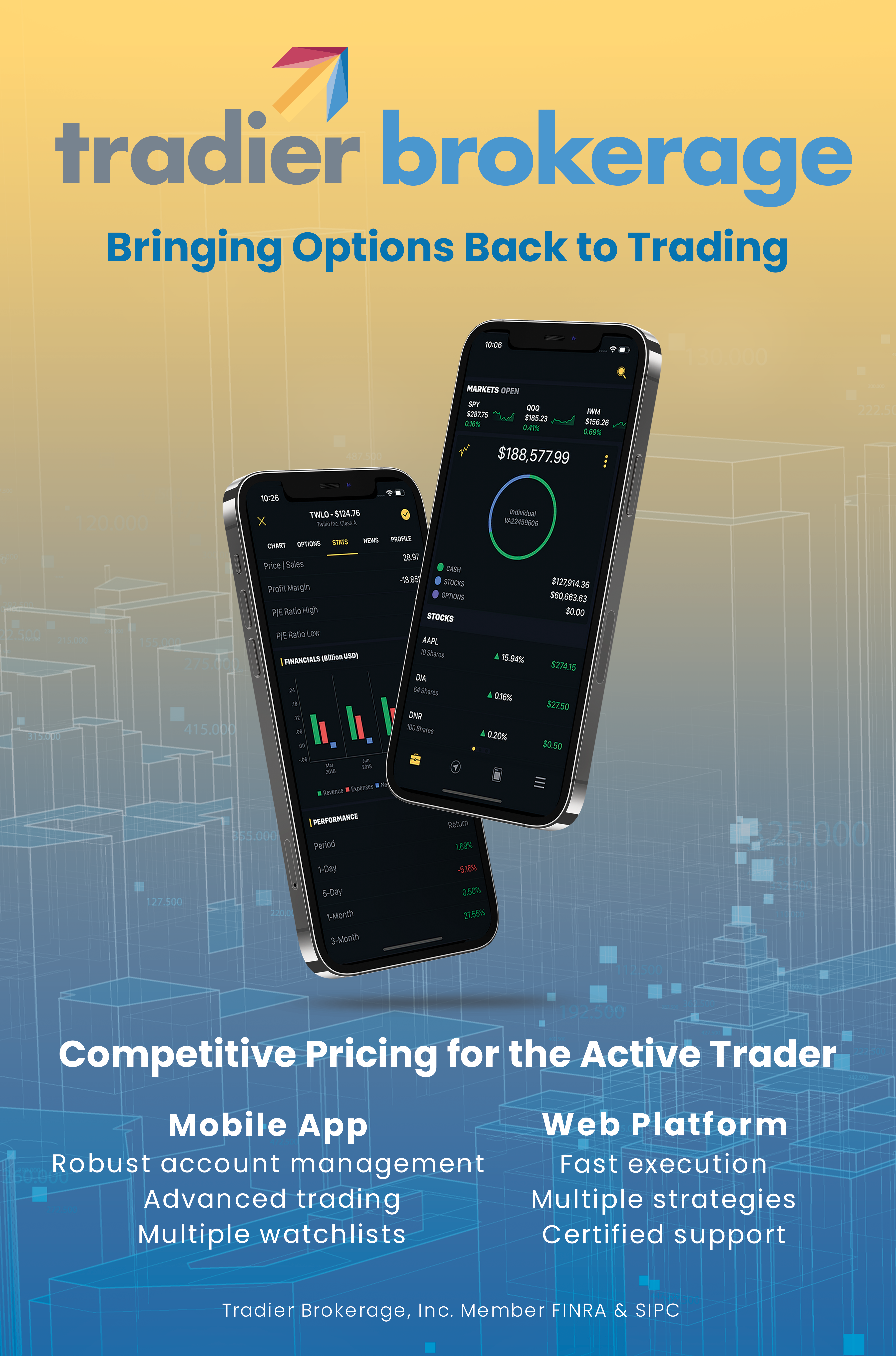Exchange-Traded Funds, or ETFs, are index funds that trade just like stocks on major stock exchanges. All the major stock indexes have ETFs based on them, including: Dow Jones Industrial Average (DIA), Standard & Poor’s 500 Index (SPX), and Nasdaq 100 Composite (QQQQ).
In addition, just about every major industry has an ETF for investors who wish to select an entire industry rather than individual stocks.
ETFs differ fundamentally from traditional mutual funds, which do not trade during the normal trading hours of the day. Traditional mutual funds take orders during Wall Street trading hours, but the transactions actually occur at the close of the market. The price they receive is the sum of the closing day prices of all the stocks contained in the fund. Not so for ETFs, which trade instantaneously all day long (just like ordinary stock).
Since ETFs trade all day, options are available on them. These options provide interesting opportunities for certain strategies, including what I call the 10K Strategy, which is the major strategy offered by Terry’s Tips.
For the most part, at Terry’s Tips, we use broad-based ETFs as underlyings (SPY, DIA) for our option portfolios because they do not fluctuate wildly like individual stocks often do (our strategy works best when the underlying stays flat or moves only slightly in either direction).
We have had good luck with one ETF that is not broad-based, but made up of 84 companies in the banking and financial services area (XLF).
The 15 most important components of the Financial SPDR (XLF) and their weights are:
1 JPMorgan Chase & Co. (JPM) 11.80%
2 Bank of America Corp. (BAC) 8.90%
3 Wells Fargo & Co. (WFC) 8.60%
4 Citigroup Inc.(C) 5.60%
5 U.S. Bancorp (USB) 4.20%
6 Goldman Sachs Group Inc. (GS) 3.10%
7 Bank of New York Mellon Corp. (BK) 2.90%
8 American Express Co. (AXP) 2.60%
9 MetLife Inc. (MET) 2.20%
10 Merrill Lynch & Co. Inc. (MER) 2.20%
11 Travelers Cos. Inc. (TRV) 2.00%
12 PNC Financial Services Group Inc. (PNC) 1.90%
13 AFLAC Inc. (AFL) 1.80%
14 CME Group Inc. (CME) 1.60%
15 Morgan Stanley (MS) 1.60%
A hedged strategy:The options strategy I use with XLF is a hedged strategy. In many respects, this strategy involves taking less risk than if I had just purchased XLF stock. Half the options are “long”, meaning they benefit when XLF moves in one particular direction, while half are “short”, meaning that they benefit if XLF moves in the other direction. No matter which way XLF moves, half the options benefit from the change in stock price.
XLF options can be better than XLF stock. I must admit that I am an options guy, not a stock guy. No matter how much I like XLF (and I do), I know that I can make a whole lot more with the options than I ever can with the stock. And I can do it with a strategy that is “hedged”. I can make money with XLF even if the stock does not go up. Usually, I can even make money when it goes down, (just as long as it doesn’t go down too much, too fast).
If you trade actively in options, and particularly if you are hedged (meaning that you are putting on many different positions rather than speculating with the simple purchase of puts or calls), it is important to look at the options market for the underlying security. Option markets for individual companies, except for a very few extremely active stocks, often have large spreads between the bid and asked price. In many cases, a single market maker sets the prices, and it is difficult to get good executions when you trade.
This means that every time you buy an option, you pay more than you would if the options were more actively traded, and when you sell, you receive less than you would in an active options market. The options market for XLF is liquid. Bid-asked spreads are small, and you can successfully execute spread orders and count on getting decent prices regardless of whether you are buying or selling.
Why is XLF better than trading individual companies?It has nothing to do with the company. Rather, it has to do with the price behavior of most individual companies. The 10K Strategy does best when the stock does not gyrate wildly. At certain times, most individual companies are subject to sudden wide swings in their stock prices. Earnings are announced, and the company either exceeds (or fails to meet) expected results, and the stock moves accordingly. An analyst upgrades (or downgrades) the stock unexpectedly, and the stock makes a big move. Sudden price changes in the stock can result in losses when using the 10K Strategy, so we prefer to trade on a basket of stocks (like XLF) rather than an individual company. That way, if one company has a big swing in stock price, the effect on the total basket of stocks is usually minimal. (If the companies are all in the same industry, sometimes one company’s gain is another’s loss, so the net effect on the basket of stocks is zero).
I call my system the 10K Strategy. It is somewhere between a boring buy-and-hold strategy and day-trading. It is not a marathon – you do not have to wait forever to see results. Neither is it a sprint, dependent on short-term increases in the price of the stock. Like any race, it takes a little effort to execute. But the extraordinary profit potential makes it all worth while, at least to my way of thinking.
A Simple Options Strategy:The 10K Strategy is based on the simple fact that all options become less valuable every day (if the stock stays flat), but short-term options go down in value (decay) at a faster rate than long-term options. I purchase slower-decaying long-term options and use them as collateral to sell faster-decaying short-term options to someone else. If the stock stays flat, I always win. Guaranteed!
But as we know, all stocks do not stay flat. Some good stocks, like XLF, actually go up much of the time. Having a good feeling about a stock (and being right) makes the 10K Strategy even more profitable than just enjoying the option decay advantage. If the stock goes up, I can make more with the 10K Strategy than I ever could with the stock alone.
If the 10K Strategy is so simple, why doesn’t everybody follow it?First of all, only Terry’s TipsInsiders know about it. That’s a pretty small, but growing, universe. Second, it really isn’t as simple as the basic underlying concept makes it seem. The strategy consists of calendar spreads at several different strike prices (both above and below the stock price), with differing numbers of spreads at different strikes (depending on your personal risk tolerance), often involves puts rather than calls (even if you are bullish on the stock), and is governed by a strict set of Trading Rules that determine when adjustments need to be made.
Does the 10K Strategy make money all the time? I’m afraid that nothing could be quite that good. But it is close. In March 2009, I set up the XLF portfolio using the 10K Strategy (we call it the Marco Polo portfolio). This portfolio was set up in an actual brokerage account all by itself, and the positions (and every trade) updated each week for Terry’s Tips Insiders.
In the first 7 months, the portfolio gained 35% after all commissions (60% annualized) in spite of some extreme mid-month volatility. Several times, the stock fluctuated by over 30% in a single month, something that our strategy has the most trouble handling. To check how the portfolio has performed since that time, go to our Track Record page.
It all sounds too complicated – can you manage the 10K Strategy for me? Unfortunately, I can’t manage your money. I publish an options newsletter, and am not a licensed investment advisor. But through a mechanism called Auto-Trade, you can mirror any of our portfolios, without having to place the trades yourself.
How Much Does It Cost to Learn All About the 10K Strategy? The White Paper (included in our subscription) costs less than a meal for two at a decent restaurant. It gives you all the information you will need to execute the 10K Strategy, and set up, and maintain, a portfolio that matches the degree of risk that you are comfortable taking. Complete Trading Rules for every risk level portfolio are included as well.
And there is more. First, you will receive a free Stock Options Tutorial which will acquaint you with the basics of option trading, including a simple explanation of the often-intimidating “Greeks.” Second, you will receive a membership to our Insiders Newsletter, where you can watch our actual portfolios unfold each week (and receive Trading Alerts whenever a change is made in a portfolio). If you wish, you can mirror one or more of these portfolios in your own account, or sign up for Auto-Trade.
And there is still more, like a list of 20 “Lazy Way” companies which allow you to make two trades at the beginning, and do nothing more for two full years. At the end of this period, you will have earned a minimum 100% on your investment, mathematically guaranteed, if the stock stays flat or goes up by any amount. In most cases, it can even fall by 5% and you make at least 100%, and it can fall by 25% and a small profit still results. (You can figure out all these numbers precisely, before you make the investment.)
Once you have become an Premium Insider, you will have access to several valuable reports on a variety of option strategies, many of which you will not be able to find in any books on options.
All this for less than the cost of a meal for two at a decent restaurant. And once you put the strategy to work, you might well be spending many pleasant evenings at better-than-decent restaurants for the rest of your life. Who knows? In could happen. It did to me, and I want to pass on my learning experiences to you.
So here’s my offer:
Become a Terry’s Tips Insider, pay only $97, and receive my updated 2020 White Paper which describes 4 unique trading strategies with complete Trading Rules for each, including the 10K Strategy that earned an average of 103% for 8 portfolios in 2005, and get all these additional benefits absolutely free:
- My Stock Options Tutorial Program service, fourteen separate lessons which provide a sound background for options trading (a $29.90 value).
- A list of 20 “Lazy Way” companies which make 100% mathematically guaranteed in 2 years if the stock stays flat, goes up by any amount, or falls by less than 5%. The “Lazy Way” strategy involves making two trades up front, and then sitting back and waiting for 2 years for your 100% to come in.
- Updates on all our actual portfolio accounts with every trade ever made in each one. Each account is a real-time unfolding of one of the basic strategies developed in the White Paper. Different underlyings or investment amounts are used for each portfolio.
- If you would like, I will email you with every trade I make in each of these accounts, so you can make those same trades yourself if you wish, maybe at even better prices.
Here is the link that could change the way you invest your money for the rest of your life – https://www.terrystips.com/signup.
If you are not convinced that now is the right time to make this investment in yourself, at least sign up for my free newsletter. You will receive my free report, “How to Create an Options Portfolio That Will Outperform a Stock or Mutual Fund Investment”.
For more information about the “Lazy Way” strategy to double your money, click Tip #5.
For more information about how you can use the 10K Strategy in your IRA, click Tip #4.
For more information about options in general, click Tip #1.
But the most important link is right here – https://www.terrystips.com/signup. That is where you can order my White Paper and maybe change how you ever thought about investing for the rest of your life.








Follow Terry's Tips on Twitter
Like Terry's Tips on Facebook
Watch Terry's Tips on YouTube